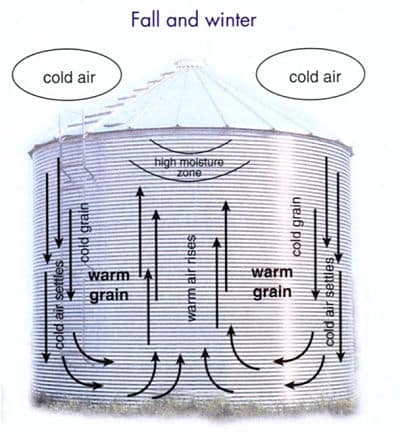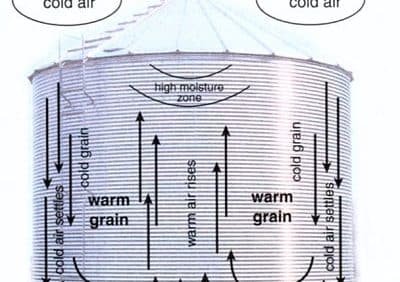We keep harping on this one, but even if we save one bin each time we repeat this message, the repetition has paid off. Because canola seed can keep respiring at a high rate for 4 to 6 weeks after harvest, this is a good time to check bins and make sure canola has cooled and is stable heading into winter. As the outside air cools, air cycles within the bin tend to concentrate moisture at the top of the central core. (See the image below.) This is a good place to check first when probing for temperature spikes. If you have any suspicions, take out one third of the bin and feel the canola to make sure it’s cool. Heated canola produces a distinct odor, so smell can also be a good indicator of spoilage occurring.
For a real example of grower who had 7,000 bushels of canola heat last winter, read the article on page 10 of the September 11 Canola Digest. The canola went into storage last fall dry but with high green. By March, two bins were severely damaged. About half of the canola was so badly damaged, the grower could only get $1 a bushel for it.
Check for air flow. To be effective, aeration fans need the horsepower to push the air front all the way through the mass of canola. The quick and easy way to check air flow is to climb to the top and feel for air exhausting through the vents.
Bin size matters. Canola has a higher bulk density than other grains, and canola in a tall narrow bin will create more resistance for air being pushed up through it than canola in a short wide bin with the same capacity. Does your fan have the horsepower it needs for your bin configuration?


